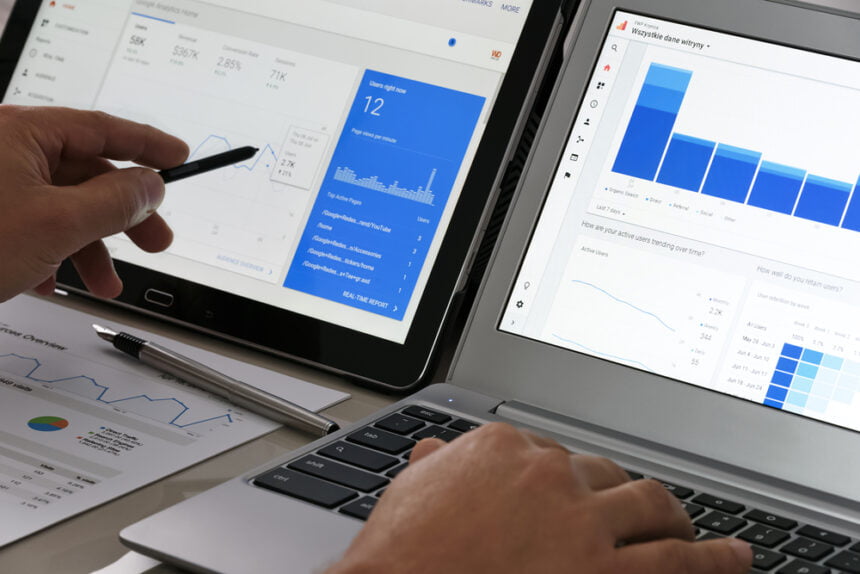Data analytics have led to a number of major changes in the field of website management and digital marketing. Although data analytics tools have offered a number of opportunities and benefits for business owners relying on their websites to reach new audiences, many of them don’t know how to use them effectively.
Every interaction on a website tells a story. The challenging part for business owners is typically turning the collected data into valuable information. Learning from visitor behaviors and using statistics requires a balance between understanding data and understanding marketing. You need the right data analytics tools, but you also need to know what KPIs to focus on.
If you’re at a loss for where to start, here are six essential website analytics you should be tracking with your analytics platform in 2021. Whether you are using Google Analytics or another web analytics tool, you should use them to your full advantage. It’s also worth noting that all of these website analytics can be tracked for your competitors too. Here’s how to check competitor website analytics.
Exit Pages
Business owners often get caught up on their bounce rate. This metric identifies when someone only views one page of your website before navigating away. In that sense, a bounce is measured as a failure. However, if someone visits your site and reads a full article or signs up for your newsletter, that’s not really a failure at all.
Instead, focus on where consumers are exiting your site. The key thing to look for here is any overarching segments of the transaction process where people are bouncing. The exit page could indicate a friction point in your UX where consumers get frustrated and move on. If you determine that this is an issue, working with a web development company to refresh your site flow could help.
Traffic Sources
The next important metric to pay attention to are your traffic sources. Where are people coming from when they visit your website? You’ll find this information within Google Analytics under “channels,” which outlines how someone reached your page. The channels include:
- Direct – they’ve typed in your URL to navigate directly to your page.
- Organic – they’ve searched a relevant keyword that brought up your site on the SERP.
- Social – they’ve clicked through a link on social media.
- Referral – they’ve clicked through a link from another website or social media page that highlighted your content.
While these four are the main highlights, you can also see data from email, display, paid search, and other advertising.
Tracking this data can help you nourish growth in targeted traffic sources and outline potential opportunities for improvement.
Top Pages
Your top pages are the pages that get visited the most. These analytics provide valuable insights into consumer behavior. This information will showcase what resonates with your audience and what they need most from you. You can use this information to shape future content campaigns and connect more deeply with your target demographic.
Understanding your top pages also helps plan for conversions and directing traffic where you want within your site.
New and Returning Users
It’s also integral to know the ratio of new versus returning users. This data indicates whether you should be focusing on nourishing loyal customer relationships or if your lead generation needs work.
The new and returning user analytics ties into many other types of website data. For example, if you have a high ratio of returning users, you might also have a high correlating direct traffic ratio. Use this information to get a better idea of where people are in your sales funnel.
Conversion Rate
The conversion rate shows how many of your visitors ultimately transact while visiting your website. Conversion rates aren’t always monetary transactions; you could also count inquiry bookings as conversions on your site, for example.
It’s also essential to look at the data regarding the cost per conversion (CPC) and the conversion source within the conversion rate. Ideally, the lower the CPC, the better. Learning where most of your converting customers are coming from can also help you shape your content and understand your audience.
Pages Per Visit
Finally, look at how many pages your visitors are looking at during a session. Lower PPV numbers indicate that you’re missing internal linking opportunities and need to improve your website flow.
Analytics and data from your website can help shape your business for success. It’s important to learn what data is relevant and how to transform that into actionable information.

